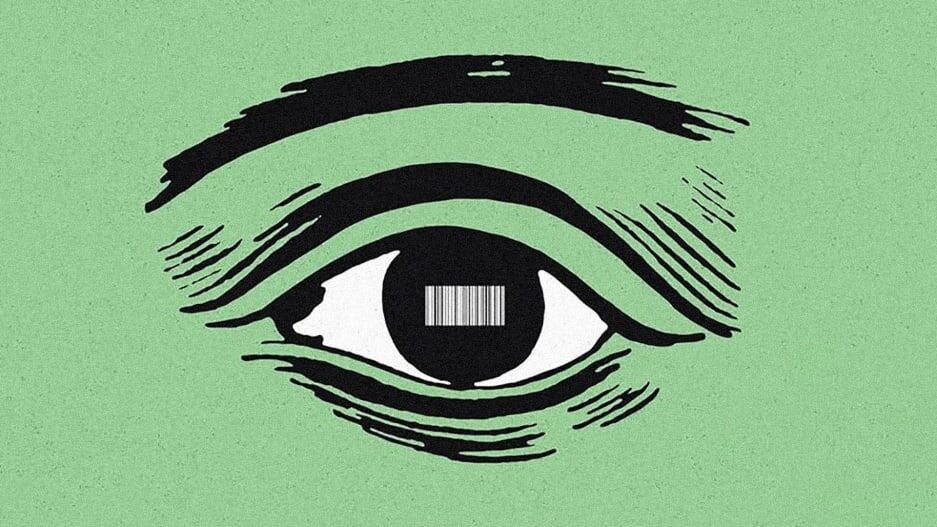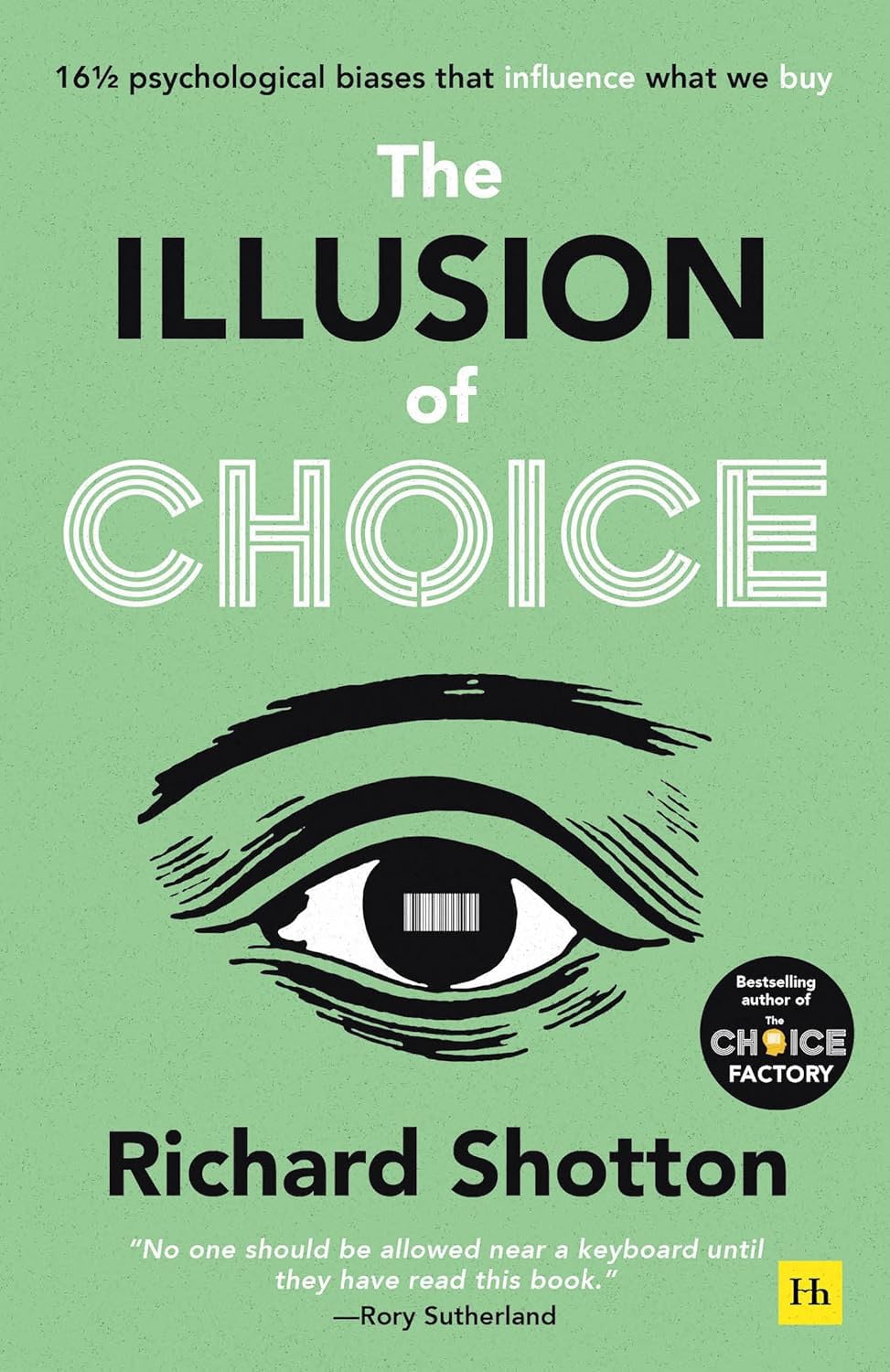- | 8:00 am
The 16 1/2 psychological biases that influence what we buy
In ‘The Illusion of Choice,’ Richard Shotton explores the behavioral psychology that affects our impression of ads and buying habits. Why don’t more marketers use it?

Back in 2011, U.K. retailer John Lewis launched a new ad for the holiday season called “The Long Wait.” Created by ad agency Adam&eveDDB, it was unlike any other Christmas-related ads at the time. It used emotion and storytelling instead of a blatant promotional sales pitch, and it was 2 minutes long, despite conventional wisdom telling marketers that even standard 30- or 60-second spots couldn’t hold people’s attention.
It was a smash hit, and fundamentally changed British advertising, transforming the Christmas season into its very own Super Bowl of advertising, with every brand aiming to make the most creatively impressive spot.
This year’s impending onslaught and the recent release of U.K.-based consultant Richard Shotton’s latest book, The Illusion of Choice, makes now the perfect time to think about the science that theoretically underpins the art of persuasion. “This time of year is really interesting because not only do you have a huge volume of advertising, you have brands starting to adopt particular tropes, and [the ads] become interchangeable,” says Shotton. “If many brands are converging on a similar approach, that is an amazing opportunity for others.”
The Illusion of Choice promises 16-and-a-half psychological biases that influence what we buy, and it builds on concepts and ideas that Shotton first delved into for his best-selling 2018 book, The Choice Factory. John Lewis used distinctiveness to draw attention to itself and distinguish itself among its rivals. Hitting them in the holiday feels also helped. This approach ties back to a 1933 University of Berlin study by Hedwig von Restorff, which concluded that our ability to recall is significantly increased when something stands out. It’s known as the Von Restorff effect, and it’s the kind of behavioral psychology that sounds like common sense but that not enough marketers utilize.
But the first thing that becomes abundantly clear in reading The Illusion of Choice is that behavioral psychology isn’t as widely used as you might think. Why?

EMBRACING BIG BROTHER
Ever since the 1957 book, The Hidden Persuaders, hit shelves—the Vance Packard bestseller that purportedly exposed the use of subliminal messages in advertising—pop culture has often suspected advertisers as a kind of corporate Big Brother. With claims that flashing ads on a movie screen for 1/3000th of a second boosted Coke and popcorn sales by 70%, a percentage of the public concluded that brands were using lab-coat brain science to convince us all to buy stuff.
Turns out, not so much, as evidenced by the parade of bad ads anonymously scrolling past our eyes on an hourly basis.
In fact, Shotton’s thesis is that more brands should be using behavioral psychology to actually improve their marketing and our impression of brands, and the book outlines specific tactics to do just that.
One concept that surprised even Shotton was the value of concreteness, or the power of concrete language over more vague phrases. In Chapter 6, he writes about a 1972 study by University of Western Ontario psychologist Ian Begg that challenged people to recall a collection of phrases—some specific like “square door” or “rusty engine,” others more abstract like “subtle fault” and “better excuse.” Recall for the statements that people were able to picture clearly—such as square door—was 36%, while only 9% remembered the more abstruse ones.
“I thought what was striking was the scale of the impact, a four-fold increase is massive,” says Shotton. “It’s not being utilized as much as it should be. If you look at taglines today, most are very abstract. Begg’s study suggests that is a mistake, and brands should turn the abstract idea into a concrete example.”
He points to the first, classic iPod ads, and the unforgettable tagline that came from Steve Jobs original 2001 introduction of the company’s MP3 player. “They didn’t come out and say how many megabytes it had, they said it had 1,000 songs in your pocket,” says Shotton. “You can picture that. That was applying this principle in a way no other MP3 players did. I do think it’s something the best copywriters use, but it’s not being applied as much as it should be more broadly.”
GO EASY . . . LIKE RHYMING EASY
In Chapter 5, we learn that many studies over the past century have concluded that the easier the information is to process, the more believable and memorable it becomes. This is known as the Keats heuristic.
The most common tactic for making information easiest to process is through rhyming.
Yet Shotton writes that in the past decade, the number of ads that use rhyming has been cut in half. In 1977, about 10% of print ads featured a rhyming tagline compared with just 4% in 2007. “Rhyme is a fascinating one,” says Shotton. “It was a very regular and common approach, and we’ve moved away from this proven tactic even though there is still evidence that it works. I think part of it is that advertisers want to illustrate their expertise to their peers rather than the end results.”
The same can be said for funny ads. A 2022 Kantar study found that there is a correlation between the decline in people’s enjoyment of ads and fewer funny ads being made over the past decade. Shotton writes in Chapter 15, “The Wisdom of Wit,” that humorous ads help create beneficial attitudes toward the brand and the ad: They garner more attention, are more memorable, increase positive emotions, and, perhaps most importantly, improve purchase intent.
THE PRINCIPAL-AGENT PROBLEM
In reading The Illusion of Choice, some of it sounds so obvious. Why aren’t more marketers using these tactics? Shotton tells me that there is something built-in to the agency-client dynamic—which also exists between in-house marketing departments and the broader company—that discourages simplicity. He points to Stephen Ross’ economic theory of the principal-agent problem. In marketing, the principal is the brand, and the agent is the ad agency or marketer.
“The principal is interested in long-term profitable growth, while the agent is interested in that, but also safe career progression,” says Shotton. “Once you start thinking about safe career progression, it moves you away from behaving distinctively. If you fail but you adopted a mainstream approach, you still have lots of evidence to justify your choice.”
If you sponsor a pro sports team and it doesn’t work out, there are still plenty of examples to show that it was a reasonable decision. This is why so many ad campaigns in certain categories look and sound the same. Shotton points to Liquid Death as a prime example of the opposite tack, of a company taking a real risk. “If you choose to market spring water like a death metal band and it bombs, you’ll be exposed as a marketer, with people wondering what you were thinking,” he says. “So there’s a pressure there, because of this principal-agent problem, that what works for the brand and what works for the employee are different things, and it leads you down to defensible decisions rather than what’s best for the brand.”
The overall lesson on The Illusion of Choice, though, is that marketers may find that what initially feels risky is actually the most logical approach. Like John Lewis’ Christmas move in 2011.
“If you’re familiar with the underlying experimentation, suddenly being distinctive isn’t risky, it’s a sensible balancing of the odds,” says Shotton. “So, if people know more about these behavioral science experiments, it liberates them to behave in a way that organizations that are unaware of these studies never would.”





































